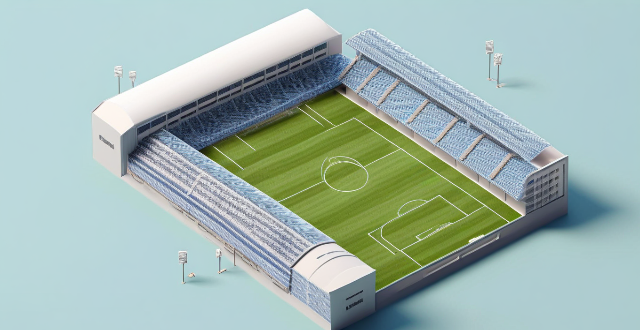Technology has revolutionized the design of sports stadiums, enhancing fan experience with interactive displays, mobile apps, and augmented reality. It also improves functionality and safety through advanced lighting systems, security cameras, and smart building management systems. As technology evolves, we can expect more innovative solutions that will further transform the way we enjoy sports events.

Introduction
Technology has revolutionized the design of sports stadiums, from enhancing the fan experience to improving the functionality and safety of the facilities. In this article, we will explore the various roles that technology plays in the design of a sports stadium.
Enhancing Fan Experience
Interactive Displays
One way technology enhances the fan experience is through interactive displays. These displays provide real-time information about the game, such as scores, player statistics, and replays. They also allow fans to engage with the game by participating in polls or voting for their favorite player.
Mobile Applications
Mobile applications have become an essential tool for sports fans. These apps provide access to tickets, seating maps, concessions, and other amenities within the stadium. They also offer features like live streaming, social media integration, and push notifications for important updates.
Augmented Reality
Augmented reality (AR) is another technology that is being used to enhance the fan experience. AR allows fans to interact with virtual objects or characters within the stadium. For example, fans can use their smartphones to view player stats or watch replays on virtual screens placed throughout the stadium.
Improving Functionality and Safety
Advanced Lighting Systems
Advanced lighting systems are crucial for creating a safe and functional environment within a sports stadium. These systems provide sufficient illumination for players and spectators while minimizing energy consumption. They also enable seamless transitions between different lighting scenarios, such as pre-game activities, halftime shows, and post-game celebrations.
Security Cameras
Security cameras play a critical role in ensuring the safety of both players and fans. They help monitor crowd behavior, detect potential threats, and assist in emergency situations. Modern security camera systems use advanced algorithms to analyze video footage in real-time, allowing security personnel to respond quickly to any incidents.
Smart Building Management Systems
Smart building management systems (BMS) integrate various technologies to optimize energy efficiency, reduce maintenance costs, and improve overall facility performance. These systems include sensors, controls, and monitoring devices that regulate HVAC systems, lighting, fire detection, and more. By leveraging data analytics and machine learning, BMS can predict maintenance needs and proactively address issues before they become major problems.
Conclusion
In conclusion, technology plays a vital role in the design of modern sports stadiums. From enhancing the fan experience through interactive displays and mobile applications to improving functionality and safety through advanced lighting systems and security cameras, technology continues to shape the future of sports venues. As technology evolves, we can expect even more innovative solutions that will further transform the way we enjoy sports events.